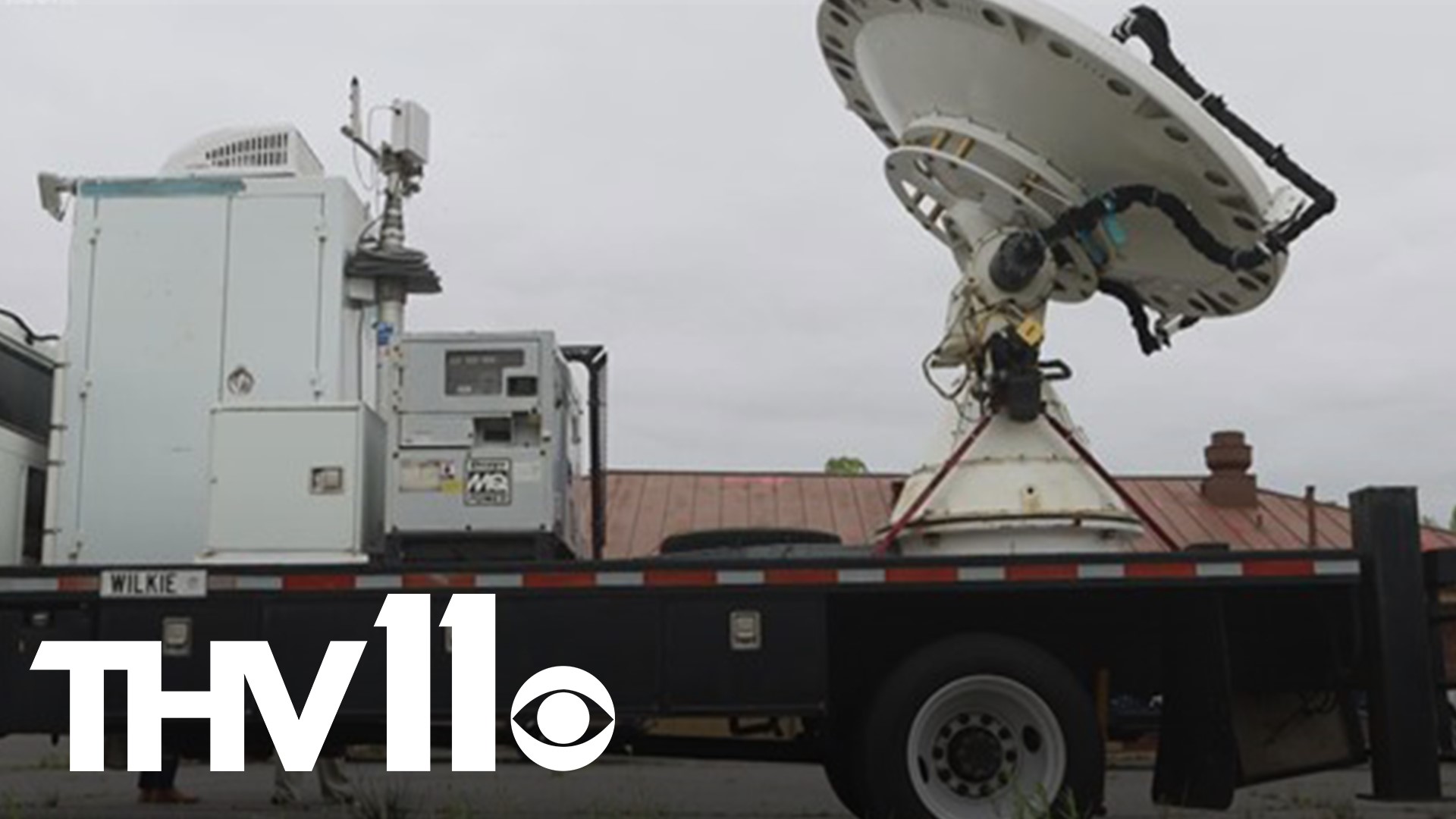LITTLE ROCK, Ark — Statistics show the majority of tornadoes seen in Arkansas are spawned by quasi-linear convective systems, more commonly known as squall lines.
These twisters often develop quickly and last a short amount of time. Warning for these types of tornadoes is difficult, but a group of researchers are using doppler radar’s mounted onto trucks to better understand how these violent storms develop.
The goal behind these high-tech reconnaissance missions? Better, and more advanced warnings.
“The more isolated supercell tornadoes, we've been doing a decent job of forecasting those recently, but the smaller ones that occur along the squall lines are very hard to forecast and give accurate, accurate warnings for so the Weather Service is funding this to try to improve the warnings of these smaller, weaker tornadoes,” said Professor Michael Biggerstaff, a radar meteorologist from the University of Oklahoma.
The mobility of these radar units, known as DOW’s, short for Doppler On Wheels, provides for closer looks inside of these storms, resulting in higher quality imaging.
When these mobile science labs were initially rolled out in 2002, the data was most often used for post-storm analysis. However, given the advancement of technology, data from these trucks is now broadcast in near-real time.
Biggerstaff said this has been a game changer.
“And so we actually can send our data back to a server at the University of Oklahoma, generate some products and put those on top of maps," Biggerstaff said. "And then that imagery is available for anybody in the public.”
Their research isn’t limited tornadoes. DOW’s are routinely deployed to the Gulf Coast in advance of hurricanes. They strategically position themselves in a manner that allows them to sample the eye-walls, which is where the strongest winds are found.

